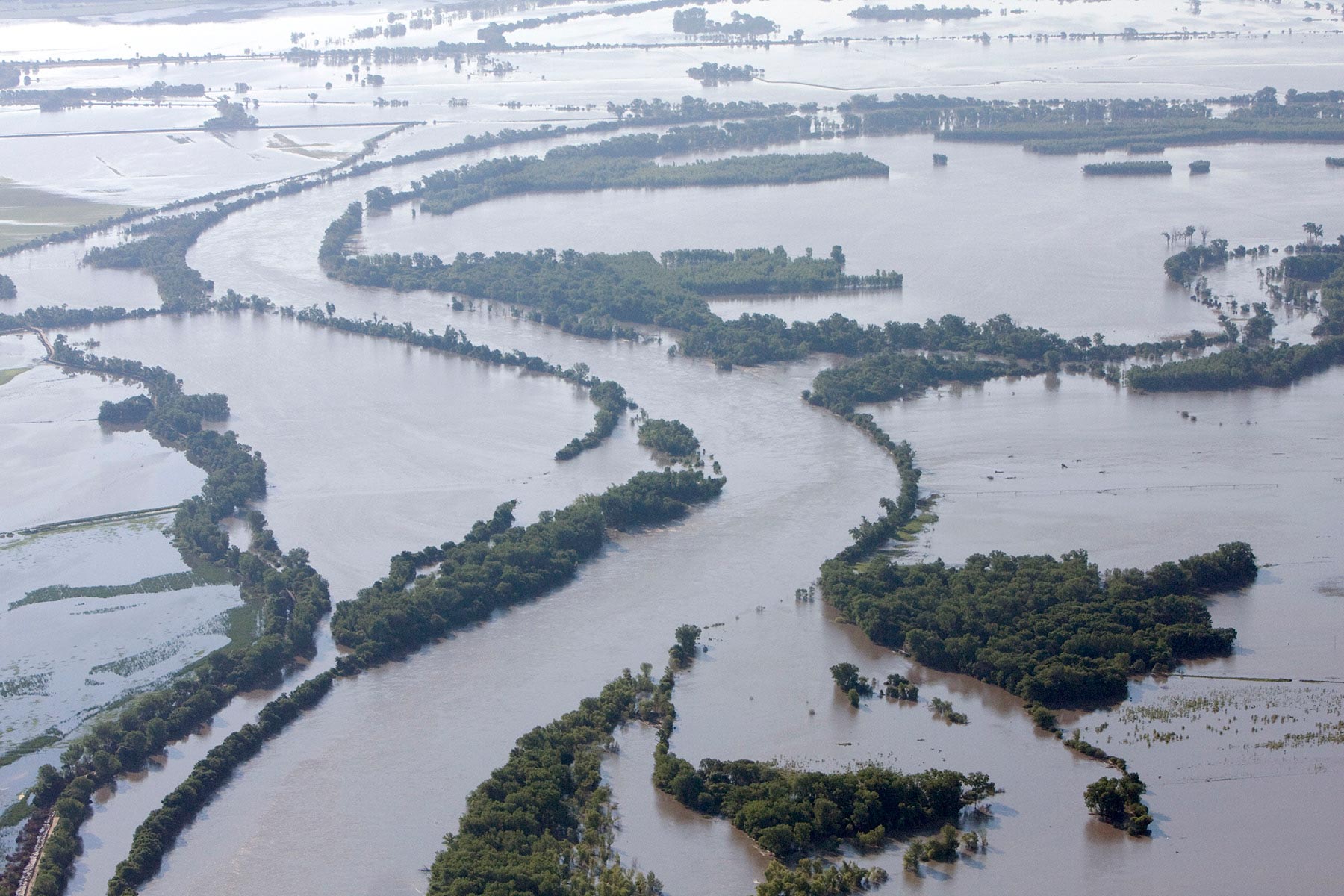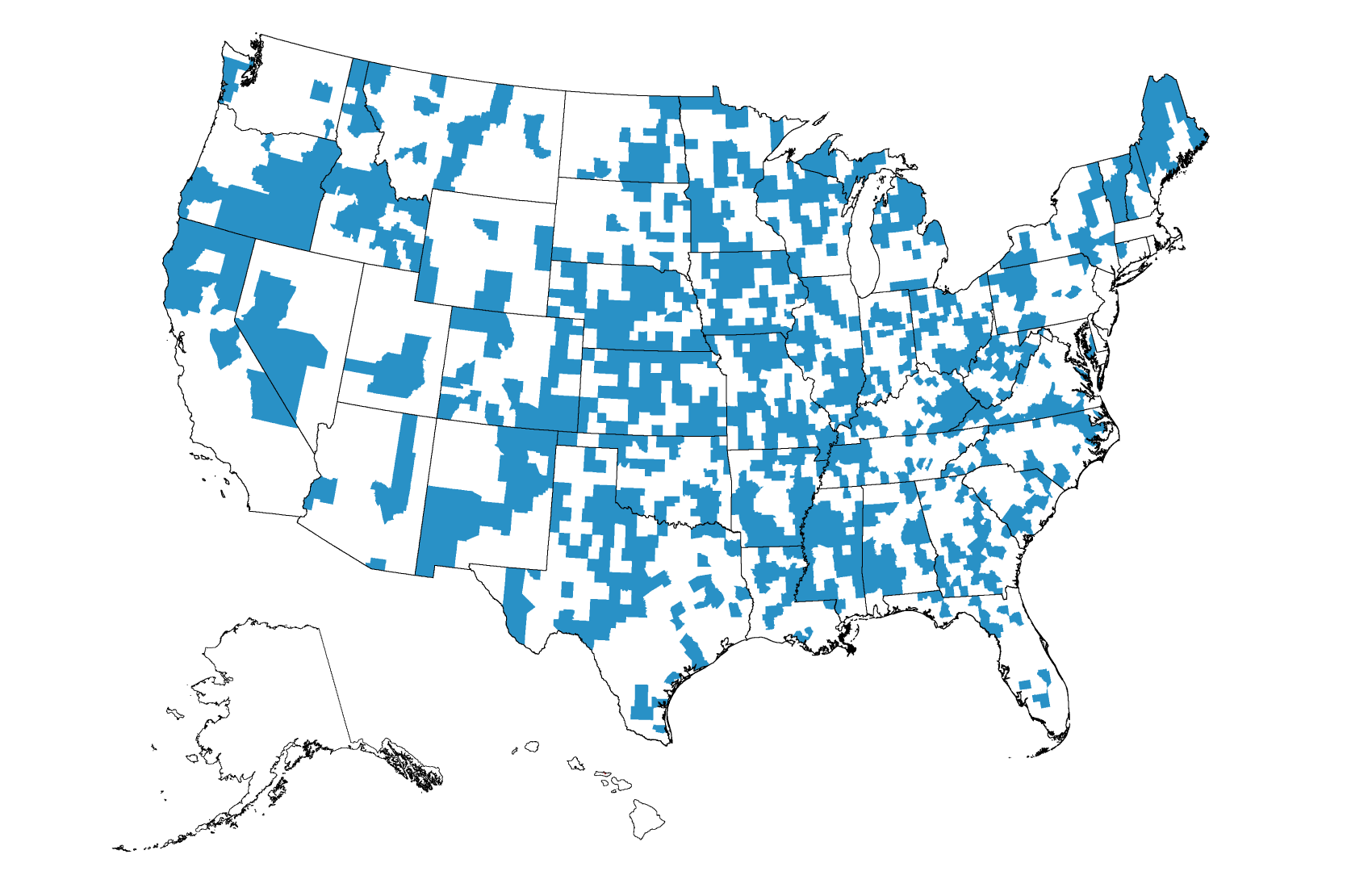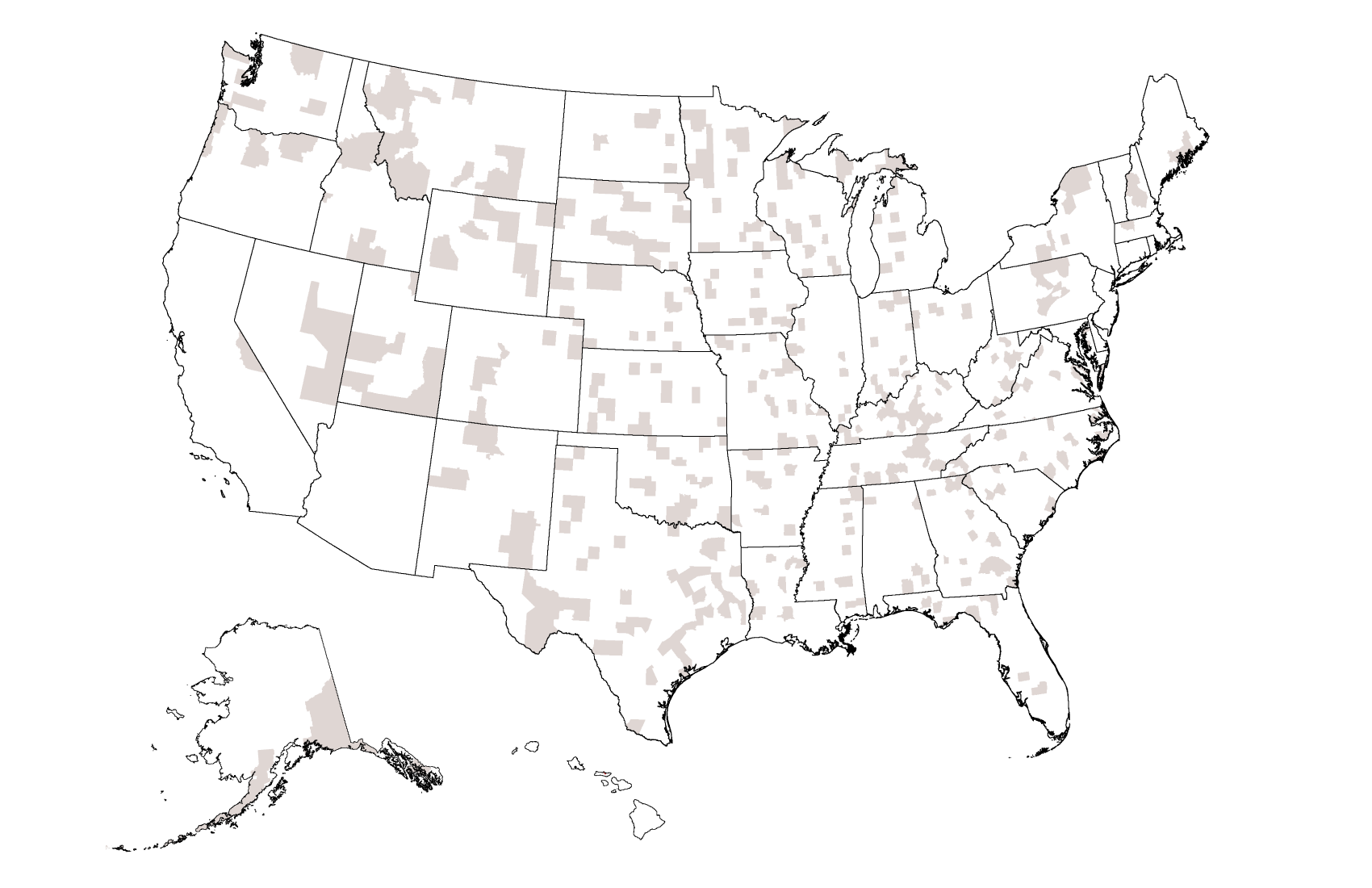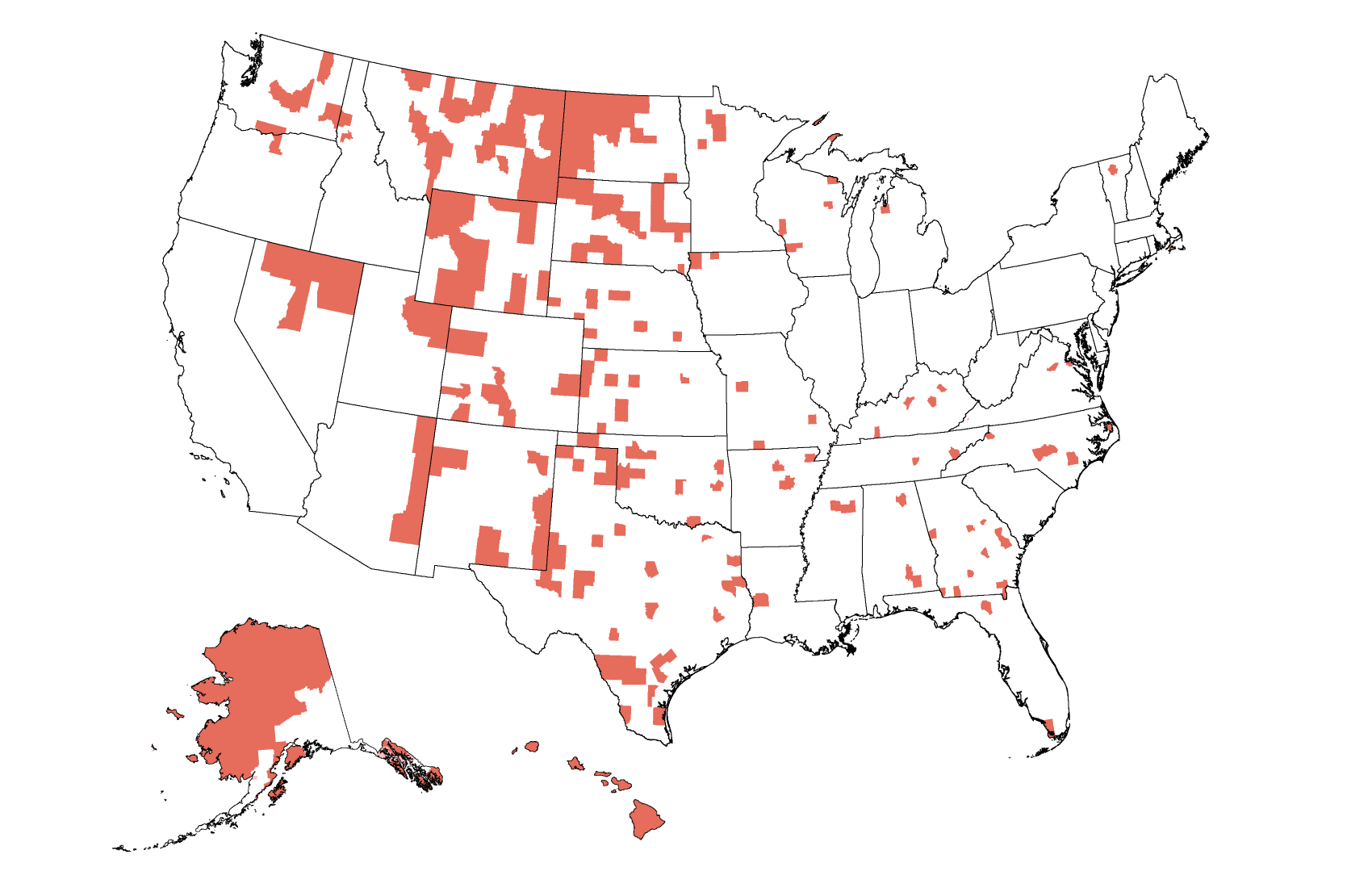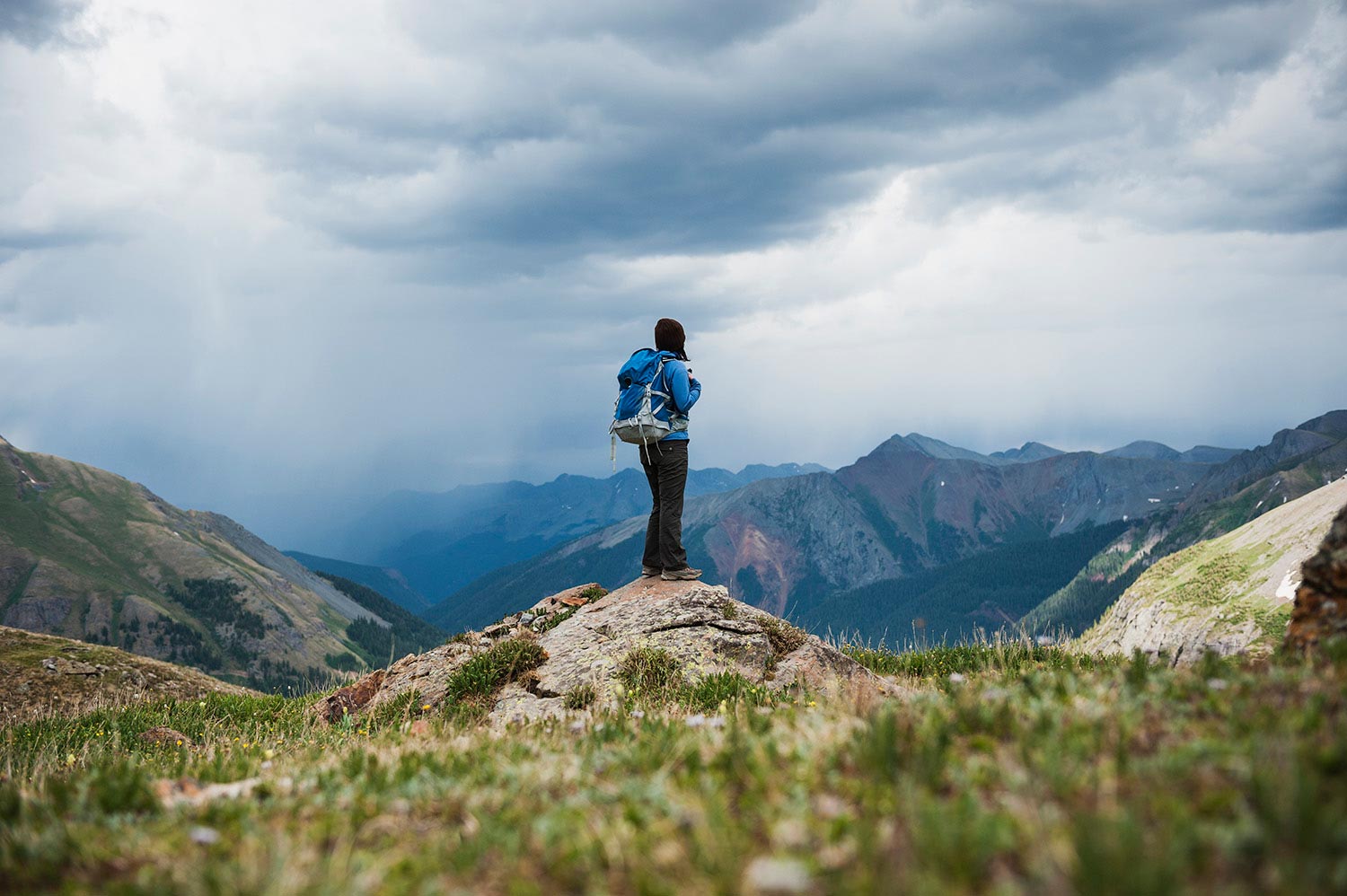Introduction
More than 95% of U.S. land area is classified as rural, but is home to just 19% of the population (see also Ch. 13: Land Use & Land Cover Change).70,71,72,73 Rural America’s importance to the country’s economic and social well-being is disproportionate to its population, as rural areas provide natural resources that much of the rest of the United States depends on for food, energy, water, forests, recreation, national character, and quality of life.74 Rural economic foundations and community cohesion are intricately linked to these natural systems, which are inherently vulnerable to climate change. Urban areas that depend on goods and services from rural areas will also be affected by climate change driven impacts across the countryside.
 ©Perry Conway/Corbis
©Perry Conway/Corbis
Warming trends, climate volatility, extreme weather events, and environmental change are already affecting the economies and cultures of rural areas. Many rural communities face considerable risk to their infrastructure, livelihoods, and quality of life from observed and projected climate shifts (Ch. 12: Indigenous Peoples). These changes will progressively increase volatility in food commodity markets, shift the ranges of plant and animal species, and, depending on the region, increase water scarcity, exacerbate flooding and coastal erosion, and increase the intensity and frequency of wildfires across the rural landscape.
Climate changes will severely challenge many rural communities, shifting locations where particular economic activities are capable of thriving. Changes in the timing of seasons, temperatures, and precipitation will alter where commodities, value-added crops, and recreational activities are best suited. Because many rural communities are less diverse than urban areas in their economic activities, changes in the viability of one traditional economic sector will place disproportionate stresses on community stability.
Climate change impacts will not be uniform or consistent across rural areas, and some communities may benefit from climate change. In the short term, the U.S. agricultural system is expected to be fairly resilient to climate change due to the system’s flexibility to engage in adaptive behaviors such as expansion of irrigated acreage, regional shifts in acreage for specific crops, crop rotations, changes to management decisions (such as choice and timing of inputs and cultivation practices), and altered trade patterns compensating for yield changes (Ch. 6: Agriculture, Key Message 5).75 Recreation, tourism, and leisure activities in some regions will benefit from shifts in temperature and precipitation.
Negative impacts from projected climate changes, however, will ripple throughout rural America. Agricultural systems in some areas may need to undergo more transformative changes to keep pace with future climate change (Ch. 6: Agriculture, Key Message 5). In lakes and riparian areas, warming is projected to increase the growth of algae and invasive species, particularly in areas already facing water quality impairments.76 Mountain species and cold water fish, such as salmon, are expected to face decreasing range sizes due to warming, while ranges could expand for some warm water fish, such as bass.77 Alaska, with its reliance on commercial and subsistence fishing catch, is particularly vulnerable. Warmer weather and higher water temperatures will reduce salmon harvests, creating hardships for the rural communities and tribes that depend upon these catches (Ch. 12: Indigenous Peoples, Key Message 1).78 Communities in Guam and American Samoa, which depend on fish for 25% to 69% of their protein, are expected to be particularly hard hit as climate change alters the composition of coral reef ecosystems.8
Across the United States, rural areas provide ecosystem services – like carbon absorption in forests, water filtration in wetlands, wildlife habitat in prairies, and environmental flows in rivers and streams – whose value tends to be overlooked. Preserving these ecosystem services sustains the quality of life in rural communities and also benefits those who come to rural communities for second homes, tourism, and other amenities. They also provide urban residents with vital resources – like food, energy, and fresh water – that meet essential needs. This layered connection between rural areas and populous urban centers suggests that maintaining the health of rural areas is a national, and not simply a local, concern.















